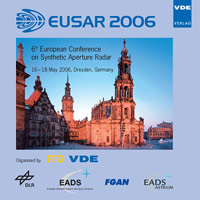Emulated Bistatic Synthetic Aperture Imaging: Real World Data Analysis - Pt I - ISAR
Konferenz: EUSAR 2006 - 6th European Conference on Synthetic Aperture Radar
16.05.2006 - 18.05.2006 in Dresden, Germany
Tagungsband: EUSAR 2006
Seiten: 4Sprache: EnglischTyp: PDF
Persönliche VDE-Mitglieder erhalten auf diesen Artikel 10% Rabatt
Autoren:
Palmer, James; Homer, John (The School of ITEE, The University of Queensland, AUSTRALIA)
Martorella, Marco (Dept. of Information Engineering, University of Pisa, ITALY)
Littleton, Brad (The School of Physical Sciences, The University of Queensland, AUSTRALIA)
Inhalt:
Recent work by the authors J. Palmer, J. Homer, and B. Mojarrabi, “Improving on the monostatic radar cross section of targets by employing sea clutter to emulate a bistatic radar,” introduced the concept of the Emulated Bistatic Radar (EBR). In an EBR, an airborne monostatic radar is configured to emulate a bistatic radar by employing the reflective nature of the sea’s surface to create a “pseudo-transmitter”. The EBR concept was developed to address the situation where the monostatic radar cross section of the target had been modified or designed to ensure minimal backscatter in the direction of the transmitter, as in the case of stealth. Following this work EBR geometries were considered in conjunction with highly coherent radar signal processing techniques, including both SAR and ISAR. Combining synthetic aperture radar processing techniques with an EBR’s geometry introduces the possibility of achieving three effective target image planes using an airborne or ground-based ISAR platform over the open ocean or any other large reflective bodies. This could prove beneficial to the detecting platform by providing extra information about the target through the generation of indirect ISAR images. This paper forms an extension to the ISAR work that was previously presented at EUSAR 2004.


